Highlighting for long hair: types and subtleties of execution
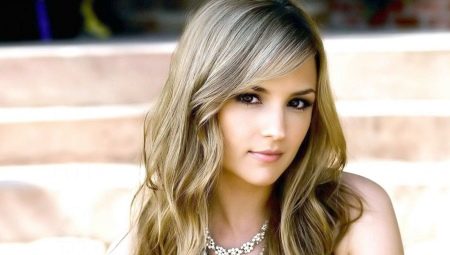
Sometimes there are situations when girls want to change their image, but at the same time they do not dare to make radical changes. For example, a change in hair color is a rather drastic measure, moreover, it injures strands, so highlighting will be the best way out in such a situation.
Peculiarities
Highlighting on long hair involves lightening individual strands in light shades that are different from the native color. Most often, related light tones are selected. As a result, the effect of smooth overflows of color is created on the curls, the hair becomes as if burnt out in the sun, which makes it look more well-groomed and fresh.

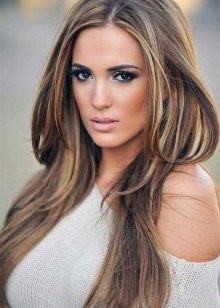
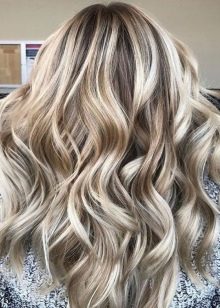
The advantages of this technique include the following.
- Dyeing does not require frequent correction. As the hair grows back, the border between the native and the colored areas becomes hardly noticeable, so you will have to visit the colorist no more often than once a quarter.
- Sparing impact. The technique is the best option to change hair color without resorting to full dyeing. When highlighting, no more than 50% of the strands are dyed, therefore the procedure is much less dangerous for the hair than monochromatic dyeing.
- Increase in volume. Correctly performed highlighting visually adds volume to the hairstyle, increases density and splendor, and creates a 3D effect.
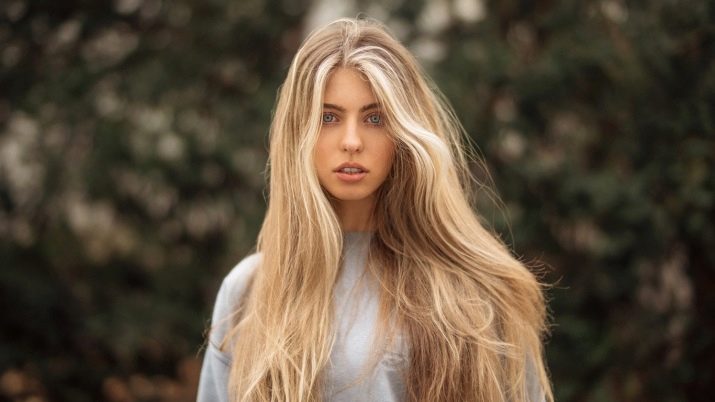
However, do not forget that, like any technique associated with chemical exposure to hair, highlighting has its drawbacks.
- It is rarely used on bright red and black hair. Such tones are washed out very poorly and it is impossible to achieve overflows without strong preliminary discoloration.
- If the hair has been dyed, then you can repaint the strands no earlier than a month later, otherwise the final shade will differ significantly from what was expected.
- Highlighting is a rather lengthy procedure, if you decide on this type of highlighting, then be prepared to spend about 4 hours in the hairdresser.
- Despite the fact that only part of the hair is repainted, there is still a risk of damage to it, therefore, in the absence of proper care after the procedure, the hair in the near future may become like a bundle of straw.
- With the wrong choice of shade, the curls can become untidy and unkempt, therefore, when planning the coloring, you should consult with the master. He will tell you which shades will most successfully fall on the hair, taking into account the characteristics of the strands, haircuts and appearance color type.
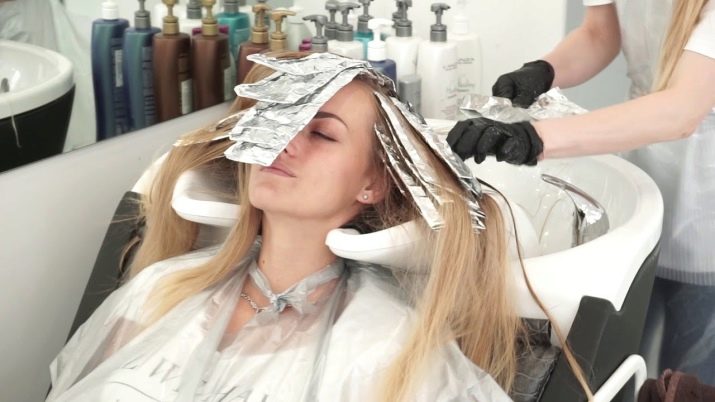
Varieties
Depending on what color effect you are looking for, highlighting on long hair can be performed using one of the following techniques.
- Classic - in this case, individual strands discolor, due to which they effectively stand out against the background of the total mass of the main shade. In this version, the curls to be lightened are selected using a comb separator in a zigzag order with the same pitch, and after the coloring composition is applied to them, they are wrapped in foil. This coloring is most often used by brunettes.

- American - this option is designed to get the effect of sun glare on the strands. Usually, from the roots to the tips, soft overflows are formed from a dark shade to a lighter shade, while the oxygenant makes it possible to achieve lightening of individual strands by 3-4 tones. The result is the effect of sun-bleached hair.
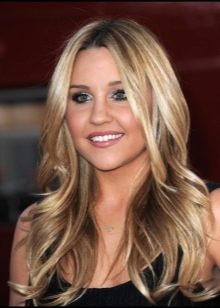
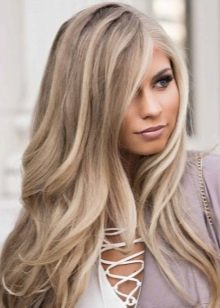
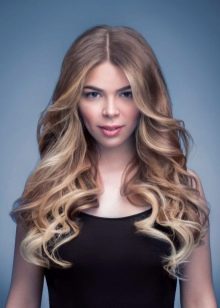
- Mazhimesh - a technique that was first presented in France. It involves the use of ammonia-free dyes, which quite harmoniously set off thick blond and light blond curls, creating overflows that are as close to natural color as possible.
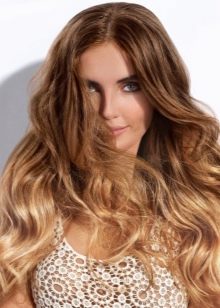
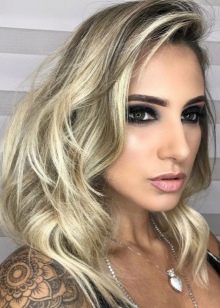

- Shatush - a kind of highlighting, in which the paint is gently shaded along the entire length of the hair. Distinctive features of such coloring are fleece on the strands, chaotic strokes and drying of color without the use of foil and film.
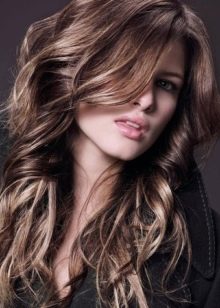
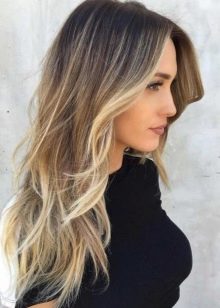
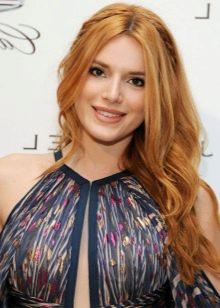
- Balayazh - this method of coloring is used for dark hair. It allows you to bring feminine and romantic notes of sun glare into the look, while the color transitions can be both smooth and sharp.

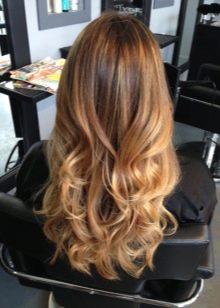
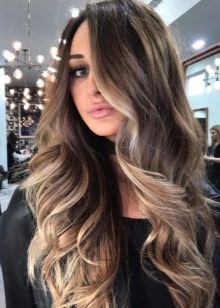
Choice of shade
The most popular is considered to be highlighting, which is performed in light shades.
However, it must be remembered that ashy blondes should choose cold tones, for example, silver, pearl or platinum. But for the owners of a wheat or light chestnut mop, preference should be given to the honey color and shades of champagne.
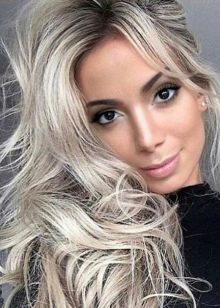

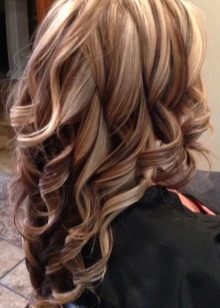
For owners of red and red shades of hair, highlighting is difficult - the pigment is poorly dyed. Nevertheless, when using good oxidants, the image can turn out to be very bright, but at the same time elegant - most often shades of beige, amber or cherry are used here.
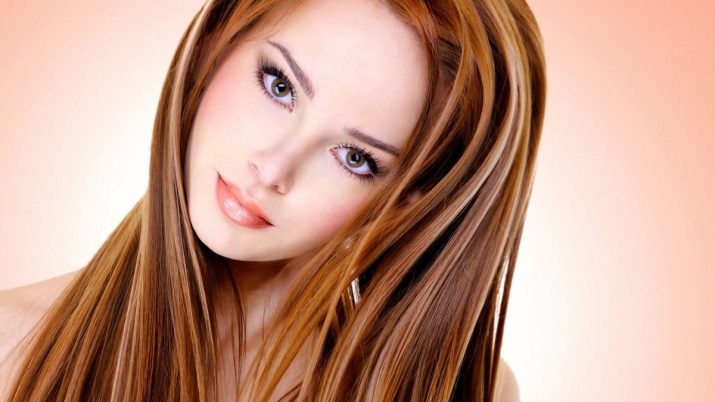
Regardless of which shade you prefer, you should keep in mind the basic rule of highlighting is cold shades (autumn and winter) are suitable for cold shades, and owners of warmer "summer" and "spring" types will suit, respectively, warm tones. If you violate this principle, then highlighting can play a pretty bad joke with women, adding visually a couple of years.
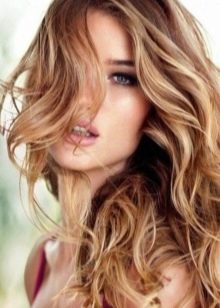
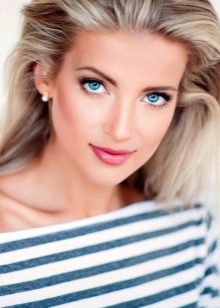
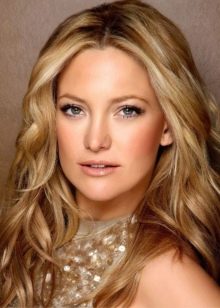
Dyeing technology
There are several interesting highlighting options. Some of them allow you to create soft colors, while others are aimed at creating stylish contrasts.
Depending on the staining technique, the following techniques are distinguished:
- complete - in this case, 40-55% of the total hair mass is decorated;

- rare - at the same time, no more than 20% of the hair is colored, the strands are rather thick, distant from each other;
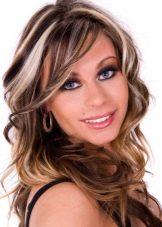

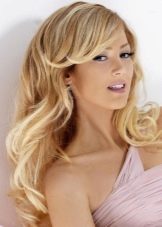
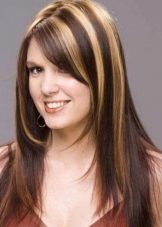
- zonal - involves the coloring of individual areas, most often it is bangs, locks framing the face, or asymmetric curls;
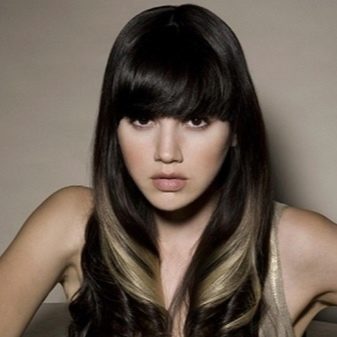

- highlighting the crown - in this case, strands are selected for dyeing only on the upper part of the heap;

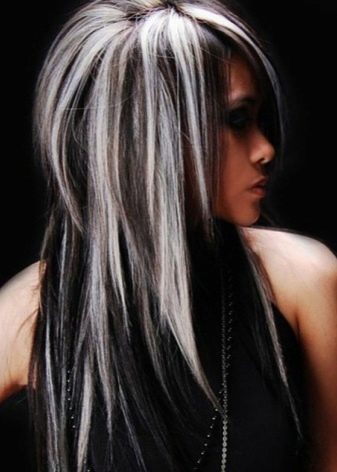
- interior lighting - here light highlights are created on the inner curls;
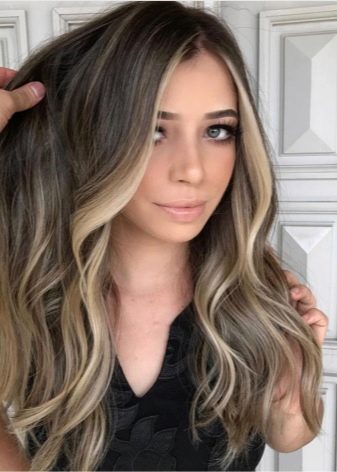
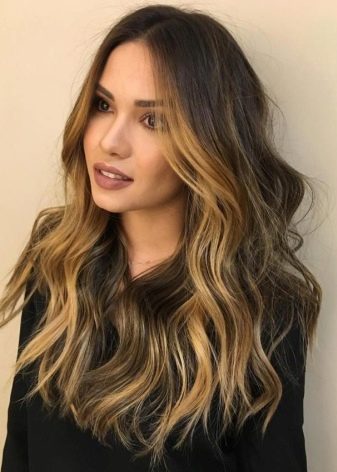
- "frost" - such highlighting is most in demand among owners of curly hair.
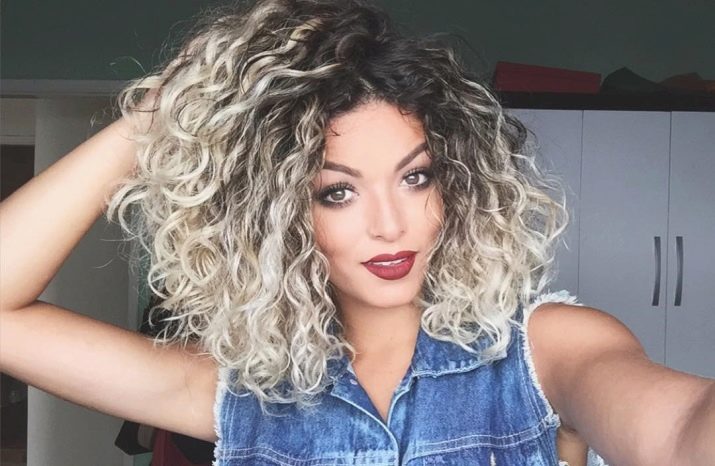
- petty - in this case, thin strands are selected in a chaotic manner throughout the head, which are discolored, and then tinted to eliminate the effect of yellow hair.
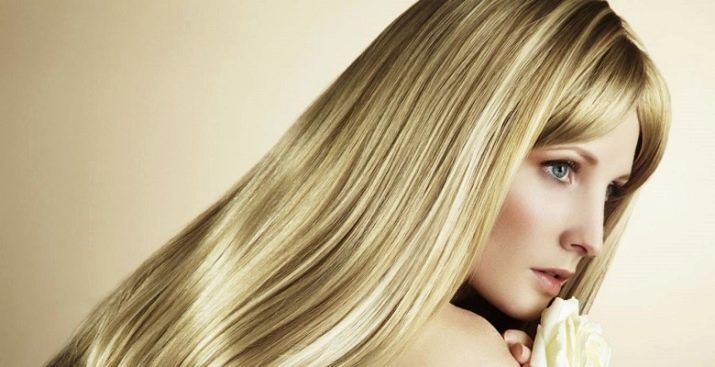
Three types of paints are used for the procedure.
- Creamy. This is the most common option. The consistency of the composition gently lies on the strands, does not spread, it is well distributed along the entire length of the curls.
- Oil. Due to its special structure, it allows the pigment to penetrate as deeply into the hair as possible.
- Powdered. The most aggressive in its effect of all the others. This composition allows you to achieve maximum discoloration of the strands, but at the same time it often causes irritation and allergies.
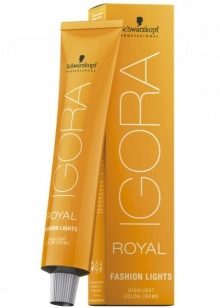
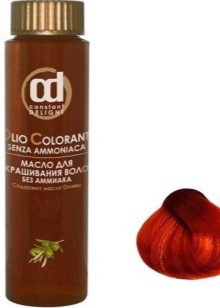
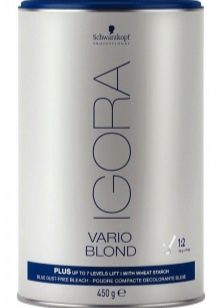
Highlighting is a rather complicated procedure that is best done in the salon. But if a girl does not have the opportunity to visit a professional colorist, then you can resort to highlighting through a hat - this is the most popular method when staining at home.
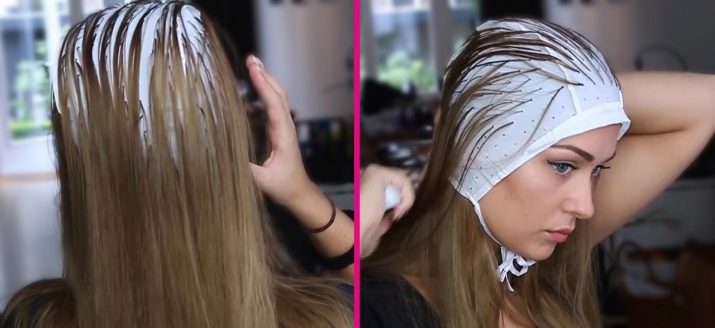
The step-by-step procedure is as follows.
- A special highlighting cap is put on the hair. It can be purchased ready-made or made on your own by making small holes in a checkerboard pattern in a polyethylene bathing cap.
- With the help of a hairpin or a hook, thin strands are taken out of the holes. To achieve the maximum change in the shade of the hair, you should pull the hair out of each hole, if you intend to achieve coloring of medium intensity, then the strands need to be pulled through one, and for easy execution - after two.
- Dilute the paint in a glass or porcelain bowl and apply it over the selected strands with a brush or sponge. The holding time of the composition depends on the desired result. If you want to achieve discoloration by one tone, then the paint is kept for 15-20 minutes, for maximum clarification it is washed off only after 40-50 minutes. The maximum allowable time, as a rule, is indicated in the instructions for the dye composition.
- Highlighted strands are washed with a special deep cleaning shampoo designed to care for colored hair. After all the paint is washed off, you should definitely apply a conditioner balm.
If necessary, use a hair tonic after lightening.

Care
After highlighting long hair, you need to pay special attention to caring for them. You should use special shampoos for colored hair, since ordinary shampoos contain sulfates, which wash out the coloring pigment and, as a result, the color is dull and lifeless.
It is necessary to minimize all the effects on the hair of elevated temperatures - limit the use of irons and styling pans, and if this cannot be avoided, then apply heat protection products to the hair before use.
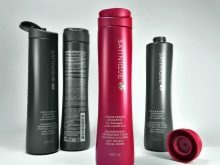
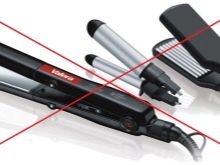
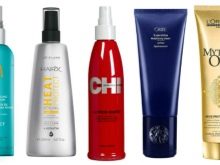
Be sure to resort to the use of masks and serums that restore the structure of the curls, heal and improve the appearance of the strands.
If you have light highlighting, you should give preference to the products of the professional series for blondes - they remove the unattractive yellow pigment, and when coloring in color, you should avoid using hair oil, since it washes out the color, as well as masks based on fermented milk products.
Successful examples
Highlighting for long hair appeared 70 years ago and since then has invariably remained fashionable and relevant, as if reliving its birth.At the same time, the principle of staining remains unchanged, but every season new staining techniques and spectacular color combinations appear.
If you are still in doubt about whether to strip your long curls or not, check out our photo selection. Perhaps examples of stylish coloring will inspire you to change your usual look.
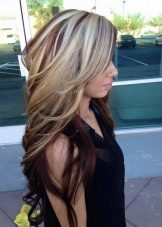
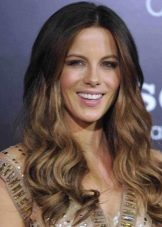

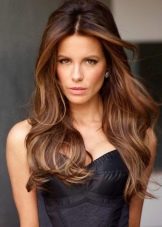
You can get acquainted with the balayage staining technique in the next video.








